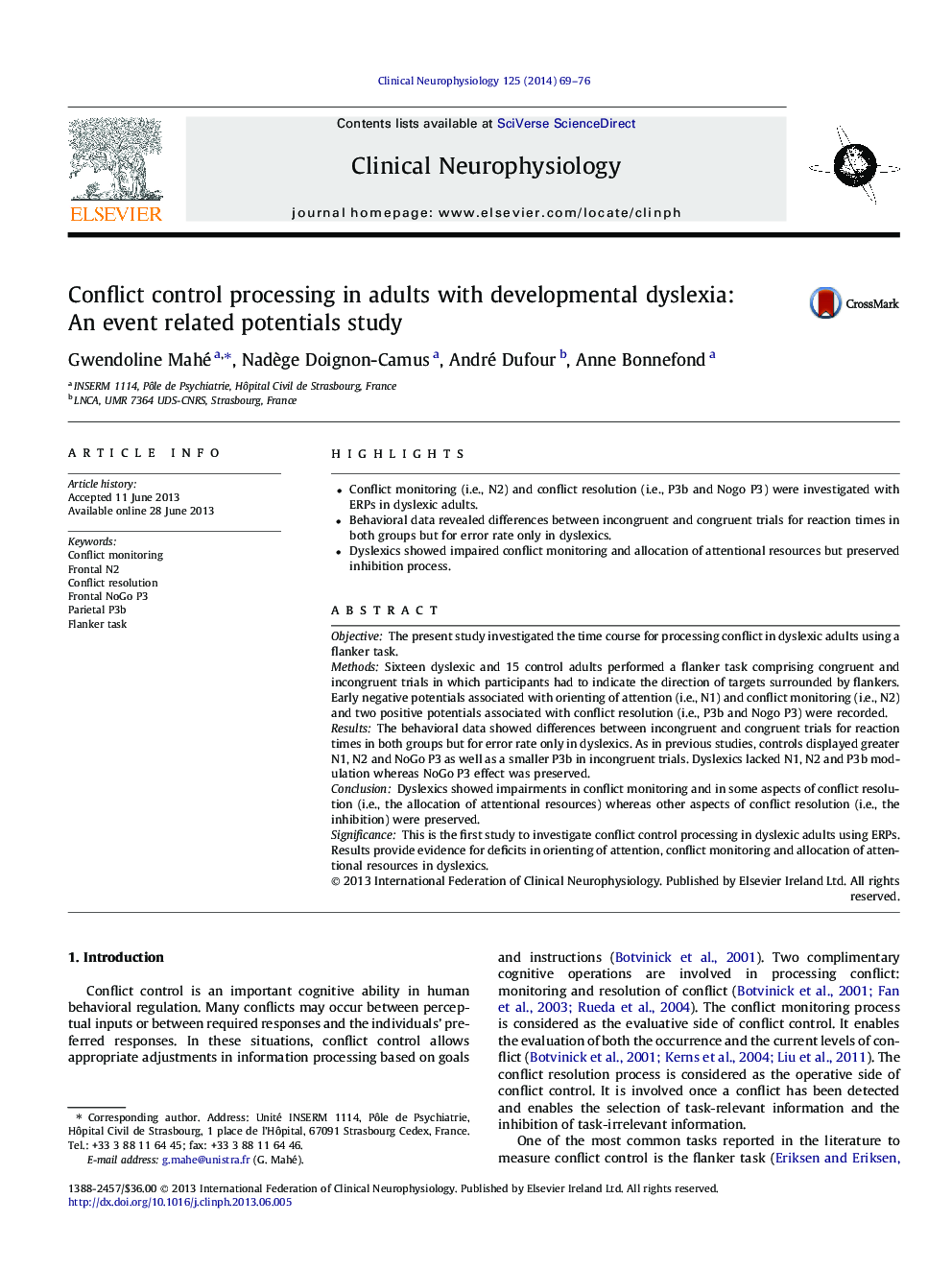| Article ID | Journal | Published Year | Pages | File Type |
|---|---|---|---|---|
| 3043635 | Clinical Neurophysiology | 2014 | 8 Pages |
•Conflict monitoring (i.e., N2) and conflict resolution (i.e., P3b and Nogo P3) were investigated with ERPs in dyslexic adults.•Behavioral data revealed differences between incongruent and congruent trials for reaction times in both groups but for error rate only in dyslexics.•Dyslexics showed impaired conflict monitoring and allocation of attentional resources but preserved inhibition process.
ObjectiveThe present study investigated the time course for processing conflict in dyslexic adults using a flanker task.MethodsSixteen dyslexic and 15 control adults performed a flanker task comprising congruent and incongruent trials in which participants had to indicate the direction of targets surrounded by flankers. Early negative potentials associated with orienting of attention (i.e., N1) and conflict monitoring (i.e., N2) and two positive potentials associated with conflict resolution (i.e., P3b and Nogo P3) were recorded.ResultsThe behavioral data showed differences between incongruent and congruent trials for reaction times in both groups but for error rate only in dyslexics. As in previous studies, controls displayed greater N1, N2 and NoGo P3 as well as a smaller P3b in incongruent trials. Dyslexics lacked N1, N2 and P3b modulation whereas NoGo P3 effect was preserved.ConclusionDyslexics showed impairments in conflict monitoring and in some aspects of conflict resolution (i.e., the allocation of attentional resources) whereas other aspects of conflict resolution (i.e., the inhibition) were preserved.SignificanceThis is the first study to investigate conflict control processing in dyslexic adults using ERPs. Results provide evidence for deficits in orienting of attention, conflict monitoring and allocation of attentional resources in dyslexics.
